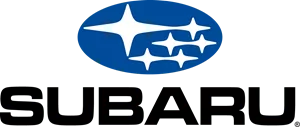Everything You Need To Know About LMS Integration
Do the jargon-filled corridors of LMS integration leave you perplexed and looking for answers? Do you need help streamlining your learning management system (LMS) with your current tools and platforms? If yes, this ultimate guide to LMS Integration will help you achieve smooth integration.
But why should you worry about LMS integration? Studies show that 90% of organizations are using LMS to enhance training and development.
Save Thousands Of Dollars With Coggno Prime Subscription
What Is LMS Integration?
LMS integration integrates a Learning Management System with existing systems or applications in an organization’s infrastructure. This interface allows for data interchange and automated procedures, increasing the efficiency of workplace learning and development tasks.
What Are The Different Types Of LMS Integration?
Different types include:
API-Based Integration
As the name suggests, API-based integration uses Application Programming Interfaces (APIs) to facilitate communication between the LMS and other systems. This type of integration is the most popular as it offers real-time data synchronization and smooth integration of various software applications within a system.
Single Sign-On (SSO) Integration
SSO integration allows users to access the LMS and other linked systems with a single set of login credentials. SSO integration increases user convenience and security by removing the need for numerous logins.
Custom Integration
Custom integration involves creating unique solutions for an organization’s specific integration needs. This strategy allows for greater flexibility and customization. The only con is that it takes more time and resources to deploy.
Must Read: What Does LMS Mean: Uses, Benefits, and Types of LMS
What Are The Benefits Of LMS Integration?
Benefits include:
Streamlined Workflows
Businesses integrating the LMS with other systems, such as Human Resources Management (HRM) or Customer Relationship Management (CRM) software, can automate administrative chores, expedite procedures, and eliminate manual involvement.
Enhanced Data Management
LMS integration allows for easy data flow between diverse systems. It helps in keeping the information consistent and accurate. Furthermore, it allows organizations to make educated decisions based on real-time data.
Improved User Experience
LMS integration with other tools and applications makes the learning process easier, more intuitive, and more interesting. A smooth user experience when downloading training courses and tracking progress improves user experience and engagement.
How To Plan For LMS Integration?
Follow the below steps to plan for LMS integration:
Assessing Integration Needs
The first step is to examine your organization’s integration needs. It includes identifying the systems or applications that need to be connected and outlining the integration initiative’s unique criteria and objectives.
Choosing The Right Integration Method
Once integration requirements have been established, the next step is to select the best integration method. To establish smooth integration, it must be based on API capabilities, security concerns, and technical specifications.
Setting Integration Goals
For the success of an LMS integration project, clear goals and objectives must be set from the outset. It involves setting key performance indicators (KPIs) to assess the integration’s efficacy and creating a realistic project timeframe and budget.
Must Read: What To Look For In A Learning Management System?
How To Implement LMS Integration?
Follow the below steps to implement LMS integration:
Pre-Integration Preparation
Before beginning the integration process, significant pre-integration preparation is required to guarantee a seamless transfer. This includes tasks like data cleansing, data migration and compatibility testing to guarantee seamless interface with current systems.
Integration Process
Once the pre-integration preparations are finished, the integration procedure begins. It includes the development phase, during which APIs are established, SSO protocols are implemented, and bespoke integration solutions are created. After creation, extensive testing and quality assurance procedures are used to discover and correct flaws or anomalies.
Deployment And Training
Following successful testing, the integrated system is launched into production. A strong rollout plan is required to reduce interruptions and provide a smooth transition for end customers. Furthermore, extensive user training and support are essential for facilitating adoption and maximizing the benefits of the integrated LMS.
Methods And Techniques Of Training
What Are The Best Practices For Successful LMS Integration
Best practices for successful LMS integration include:
Establishing Clear Communication Channels
Effective communication is essential for the success of an LMS integration project. Clear communication channels between project stakeholders, such as IT teams, department heads, and end users, ensure that goals, expectations, and schedules are aligned throughout the integration process.
Collaborating With Stakeholders
Collaboration among all parties participating in the integration effort is critical to success. IT teams are responsible for technical execution, department heads supervise functional requirements, and end users provide feedback and insights into usability and functionality.
Regular Monitoring And Maintenance
Even after the integration process is completed, constant monitoring and maintenance are required to guarantee that the system remains effective and stable. Regularly monitoring key performance metrics, responding to any difficulties or concerns, and introducing updates and upgrades as needed are vital for effective LMS integration.
How To Overcome Common Challenges With LMS Integration
Challenges associated with LMS integration are:
Data Security Concerns
One of the most common concerns about LMS integration is data security. Data confidentiality, integrity, and availability are prone to theft when sensitive information is shared across systems. Implementing strong security measures like encryption, access restrictions, and regular security audits can help reduce security risks and protect sensitive data.
Technical Compatibility Issues
Another prevalent concern in LMS integration is technical compatibility across various systems and applications. Technical difficulties must be overcome by careful planning, comprehensive testing, and proactive problem-solving to guarantee seamless integration and optimal performance. These can range from compatibility concerns with older systems to interoperability challenges with third-party software.
Resistance To Change
Resistance to change is a normal human response, and overcoming it is sometimes one of the most difficult tasks in LMS integration initiatives. Whether it’s fear of technology, job security concerns, or a reluctance to learn new systems, overcoming resistance to change necessitates effective change management strategies, clear communication, and proactive engagement with stakeholders to foster buy-in and support for the integration project.
Must Read: A Learning Management System for a Better Workplace
What Are The Future Trends In LMS Integration?
Future trends that we can see in LMS can be:
Advancements In API Technology
As technology advances, API technology will improve the capabilities and flexibility of LMS integration. These improvements can range from more robust APIs with increased security features to standardized protocols that support interoperability across diverse systems. They will allow enterprises to reach even higher levels of integration and automation, promoting efficiency and creativity in the digital age.
Integration With Emerging Technologies
The advent of emerging technologies like artificial intelligence (AI), machine learning, and augmented reality (AR) opens up new options for LMS integration. By incorporating these technologies into the LMS ecosystem, companies can provide more customized and immersive learning experiences. It will dynamically change material depending on learner preferences and performance and use data analytics to obtain deeper insights into learning behavior and results.
Focus On Personalization And Adaptive Learning
Personalization and adaptive learning are developing ideas that are changing the face of LMS integration. Organizations may customize learning experiences to individual learners’ needs and preferences by integrating tools and technology for individualized learning paths, adaptive assessments, and real-time feedback. This, in addition to increasing engagement and retention, allows learners to take control of their learning path.
Looking For The Best LMS?
Look no further! Coggno LMS is all you need. Fill out the form below to get in touch with our experts. They will help you in the best possible way.
Bottom Line
LMS integration benefits companies trying to maximize their learning and development operations. As we look ahead, continuous technological breakthroughs and developing trends will influence the landscape of LMS integration, opening up new chances for creativity and success in the ever-changing corporate environment.
Maximize Training, Minimize Costs With Coggno Prime



















